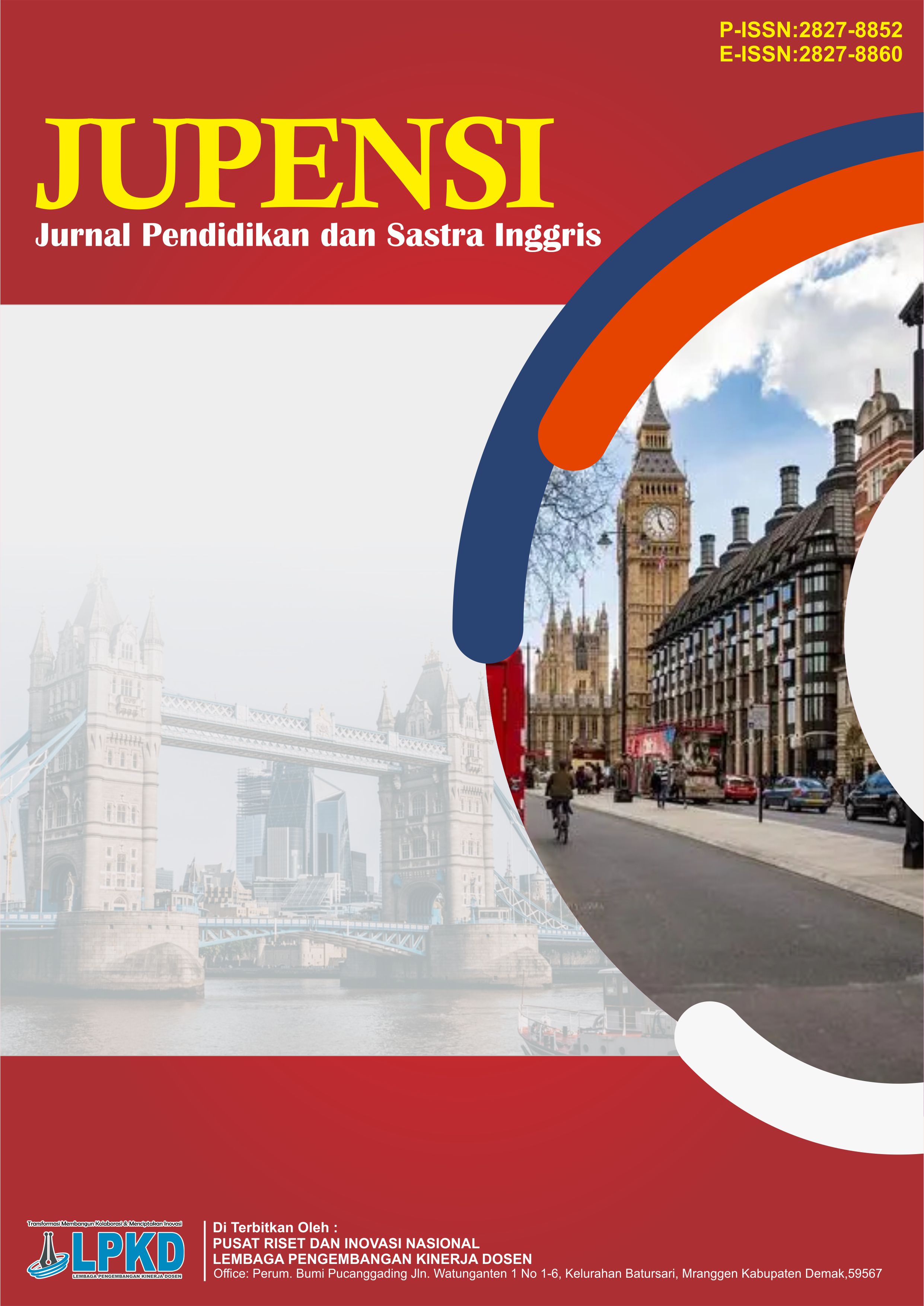An Analysis of Lexical Accuracy in Meta AI Automatic Translation of Buttonscarves Beauty’s Instagram Captions
DOI:
https://doi.org/10.55606/jupensi.v5i2.5204Keywords:
translation machine, Instagram caption, translation problemsAbstract
This research examines the lexical accuracy of Meta AI’s machine translation in translating Instagram’s captions in English into Indonesian on the @buttonscarvesbeauty account. Using a descriptive qualitative analysis based on Molina and Albir’s (2002) taxonomy, the research evaluates lexical fidelity, translation strategies, and the accuracy of meaning transfer through the aspects of accuracy, appropriateness, and acceptability. The results show varied translation performance, with significant challenges in handling beauty related technical terms and marketing language. Simple terms such as “hydration” (hidrasi) demonstrate high accuracy, while more complex terms like “fine,” “airbrushed,” and idiomatic expressions such as “Make every wink count” are translated literally, losing their persuasive function. The system tends to rely on literal translation with limited use of modulation, transposition, and adaptation strategies. The findings suggest that machine translation is still inadequate for marketing content, which requires cultural adaptation and persuasive language. Beauty brands still need a human touch to keep their brand identity and message consistent. This study looks at how effective machine translation is in social media marketing, and gives practical suggestions to improve the quality of automatic translations in commercial settings.
Downloads
References
Adlina, N. (2020). Analysis on the translation of hyphenated compound adjectives by Instagram caption translation tool. ResearchGate. https://doi.org/10.13140/RG.2.2.23179.23847
Ardianto, A. (2021). Translating that: An ideational correspondence analysis of machine translation. Humanika, 10(1), 1–12. https://doi.org/10.21831/humanika.v10i1.37333
Arnold, D. J., Balkan, L., Meijer, S., Lee, R., & Sadler, L. (1994). Machine translation: An introductory guide. NCC Blackwell Ltd.
Bowker, L. (2020). Fit-for-purpose translation. In M. O’Hagan (Ed.), The Routledge handbook of translation and technology (p. 691). Routledge.
Cronin, M. (2013). Translation in the digital age. Routledge.
Goutte, C., Fishel, M., & Specia, L. (Eds.). (2009). Learning machine translation. The MIT Press.
Hartono, R. (2020). Translation techniques & methods. LPPM UNNES Press.
Kenny, D. (2022). Human and machine translation. In D. Kenny (Ed.), Machine translation for everyone: Empowering users in the age of artificial intelligence (pp. 33–34). Language Science Press.
Koehn, P. (2020). Neural machine translation. Cambridge University Press.
Kuswardarni, Y., & Sari, F. M. (2022). Translation quality on product label from English into Indonesian. AMCA Journal of Community Development, 2(2), 55–60. https://doi.org/10.51773/ajcd.v2i2.146
Latief, M. R. A., Khaerana, A. A., & Soraya, A. I. (2022). Translation analysis: Syntactic, semantic, and pragmatic strategies used in translating a website of an academic institution. ELS Journal on Interdisciplinary Studies in Humanities, 5(3), 343–350. https://doi.org/10.34050/elsjish.v5i3.23176
Meta. (2023, August 22). Introducing SeamlessM4T, a multimodal AI model for speech and text translations. Meta. https://about.fb.com/news/2023/08/seamlessm4t-ai-translation-model/
Molina, L., & Albir, A. H. (2002). Translation techniques revisited: A dynamic and functionalist approach. Meta: Journal des Traducteurs, 47(4), 498–512. https://doi.org/10.7202/008033ar
Munday, J. (2022). Introducing translation studies: Theories and applications (5th ed.). Routledge.
Nababan, M. R. (2008). Teori menerjemah bahasa Inggris. Pustaka Pelajar.
Quah, C. K. (2006). Translation and technology. Palgrave Macmillan.
Susanti, E. (2018). Lexical errors produced by Instagram machine translation [Unpublished undergraduate thesis]. Universitas Islam Negeri Maulana Malik Ibrahim.
Yanti, D. (2019). Penerjemahan mesin pada bahasa iklan di aplikasi Instagram pada akun bisnis Make Over Cosmetics. Jurnal Sasindo UNPAM, 7(1), 1–22. https://doi.org/10.32493/sasindo.v7i1.1-22
Downloads
Published
How to Cite
Issue
Section
License
Copyright (c) 2025 Jurnal Pendidikan dan Sastra Inggris

This work is licensed under a Creative Commons Attribution-ShareAlike 4.0 International License.









